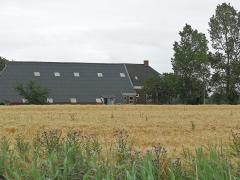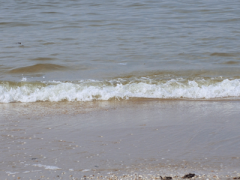Modeling Process-Based Biogeochemical Dynamics in Surface Fresh Waters of Large Watersheds With the IMAGE-DGNM Framework
Humans have strongly modified the functioning of the Earth's surface fresh waters, through pollution emissions and infrastructure, which has led to widespread ecological deterioration. Human acceleration of the nutrient cycles leads to enhanced loading and accumulation of nitrogen and phosphorus in landscapes and waterscapes.
A dynamic model is needed
Particularly, for assessing nutrient impacts on harmful algal bloom proliferation, the seasonal variability of nutrient loading and their proportions need to be known. Large‐scale water quality models are usually too coarse to identify spatiotemporal pollution hotspots within river networks and lack any representation of pollution remobilization from bed sediments. Such remobilization can delay the response to mitigation strategies to improve water quality. To bridge these gaps, we developed a new tool simulating in‐stream pollutant transfer and transformation processes, allowing for the assessment of changes in the water quality over time within whole river networks. This tool is applicable globally and is applied here to two large watersheds to simulate sediment and nitrogen dynamics.
Importance of bed-sediment processes
Results show that including processes in bed sediments is crucial to correctly assess water quality in heavily dammed river networks, such as the Mississippi. The new tool is of great importance for future projections and policy development. It will allow for identifying efficient mitigation options, pinpointing vulnerable areas within global river networks, and assessing the time needed for freshwaters ecosystems' recovery.
Authors
Specifications
- Publication title
- Modeling Process-Based Biogeochemical Dynamics in Surface Fresh Waters of Large Watersheds With the IMAGE-DGNM Framework
- Publication date
- 21 July 2020
- Publication type
- Article
- Publication language
- English
- Magazine
- Journal of Advances in Modeling Earth Systems
- Issue
- vol 12 (11)
- Product number
- 4343




